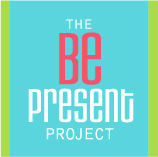Lately, I’ve been reflecting on the why behind this project—not just why I started it, but why I continue to return to it, again and again. The answer is simple, and it’s the same every time:
Because being present changes everything.
It changes how we show up for the people we love.
It changes how we experience our work.
It changes how we see ourselves.
It grounds us in meaning, clarity, and joy—especially in a world that rarely slows down.
Presence isn’t just a feel-good concept. It’s a way of life. And it’s a practice worth fighting for.
As someone who has always found truth in words, I often turn to powerful texts to keep me centered. One that continues to speak to me is A Way of Life, a 1913 speech by Sir William Osler delivered to Yale students. Over a century later, his words feel incredibly relevant.
He writes:
“Life is a habit, a succession of actions that become more or less automatic.”
And that made me wonder: what if presence became one of our habits? Not something we had to remember or force—but something we just did, naturally and consistently. Imagine how different life could feel.
Osler also encourages us to live in “day-tight compartments.” To stop dragging yesterday into today. To stop letting tomorrow steal today’s peace. That idea resonates deeply. So often, we carry the weight of everything at once—what we haven’t done, what’s still ahead, what we wish we’d handled differently.
He puts it perfectly:
“The load of tomorrow, added to that of yesterday, carried today makes the strongest falter.”
So why not let it go?
Presence invites us to focus on what’s in front of us. On what matters. On what’s real.
It doesn’t require perfection—just intention.
That’s what The Be Present Project is all about. It’s not about doing more. It’s about being here more—where your actual life is unfolding, right now.
Start small.
Put down the phone.
Take a breath.
Look someone in the eye.
Step fully into the moment you’re already in.
Because happiness doesn’t live in the past or future.
It lives in today.
And presence is how we find it.
